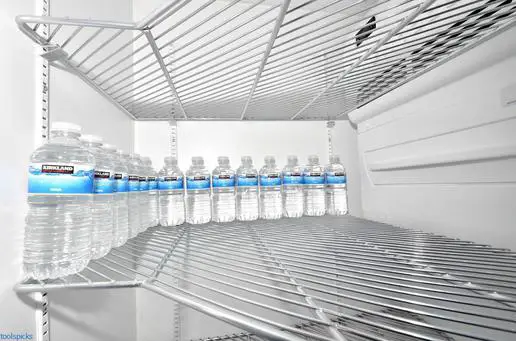Refrigerators are one of the most common household appliances. We use them to store food and drinks, and to keep them cold. But what many people don’t know is that refrigerators emit harmful gases into the environment. In this blog post, we will discuss “what do refrigerators emit that are harmful to the environment” and what you can do to reduce their impact on the planet.
Harmful Gases Emitted By Refrigerators?
Carbon Dioxide
Carbon dioxide is a colorless, odorless gas that is emitted by refrigerators. It is also a greenhouse gas, meaning it traps heat in the atmosphere and contributes to global warming. When released into the atmosphere, carbon dioxide absorbs heat and light, preventing it from escaping back into space. As a result, the Earth’s atmosphere becomes warmer, causing the Earth to warm as well.
In addition to refrigerators, carbon dioxide is also emitted by cars, power plants, and factories. Reducing carbon dioxide emissions is essential for slowing down the effects of climate change. There are many ways to do this, such as driving less, using public transportation, and recycling. By working together, we can make a difference and help protect our planet.
Hydrofluorocarbons
Hydrofluorocarbons are commonly used as refrigerants due to their high efficiency and low cost. However, HFCs are also potent greenhouse gases, with a global warming potential (GWP) that is thousands of times greater than carbon dioxide. As a result, the use of HFCs in refrigerators and air conditioners is a major contributor to climate change. In addition to their high GWP, HFCs also have a relatively long lifespan in the atmosphere. This means that even small amounts of HFCs can have a significant impact on the climate.

Fortunately, there are several alternatives to HFCs that are less harmful to the environment. These include hydrofluoroolefins (HFOs) and natural refrigerants such as carbon dioxide and ammonia. By using these alternatives, we can reduce our impact on the climate and help to slow down the process of global warming.
Nitrogen oxides
Refrigerators are one of the most common appliances in households around the world. While they are essential for keeping food fresh, they also emit harmful nitrogen oxides (NOx) into the environment. NOx is a pollutant that can contribute to smog, acid rain, and respiratory problems in humans and animals. Additionally, it can cause damage to plants and ecosystems. There are a few ways to reduce the amount of NOx emitted by refrigerators.
First, ensure that your fridge is properly sealed and insulated. This will help to keep it from working harder than necessary, which will in turn reduce emissions. Second, be sure to properly maintain your fridge, including cleaning the coils and making sure that the door seals are tight. By taking these simple steps, you can help to protect the environment from the harmful effects of NOx emissions.
Chlorofluorocarbons
Chlorofluorocarbons are what refrigerators emit that are harmful to the environment. Every time you open your fridge, these chemicals are released into the air, where they rise into the stratosphere and destroy the Earth’s ozone layer. This thin shield of gas protects us from the harmful ultraviolet rays of the sun, and without them, we would be exposed to a greater risk of skin cancer, cataracts, and other health problems.
While chlorofluorocarbons are no longer used in refrigerators, they’re still present in many other products, such as aerosol cans and insulating foam. As a result, they’re still doing damage to the ozone layer, which is why it’s so important to be aware of their existence and what they do to our planet.
What Are Some Ways You Can Reduce The Impact Of These Gases?
Choose a refrigerator that is Energy Star certified.
In today’s market, there are many energy-efficient appliances to choose from that can help reduce your carbon footprint. When shopping for a new refrigerator, be sure to look for one that is Energy Star certified. This means that the appliance has met certain standards set by the Environmental Protection Agency in terms of energy efficiency. Refrigerators use a large amount of electricity, and they also emit harmful chemicals into the atmosphere.
By choosing an Energy Star certified refrigerator, you can help reduce your contribution to climate change. In addition to being more environmentally friendly, Energy Star certified refrigerators are also often more affordable to operate than traditional models. As a result, making the switch to an Energy Star fridge is a smart choice for both your wallet and the planet.
Install Your Refrigerator In A Well-Ventilated Area.
It is very important to install your refrigerator in a well-ventilated area. The main reason for this is that refrigerators emit harmful chemicals into the environment. Chlorofluorocarbons (CFCs) and hydrofluorocarbons (HFCs) are two of the most harmful chemicals emitted by refrigerators. These chemicals contribute to ozone depletion and climate change. In addition, CFCs and HFCs are also toxic to humans and animals.
When these chemicals are released into the environment, they can cause respiratory problems, skin irritations, and other health problems. Therefore, it is essential to ensure that your refrigerator is installed in a well-ventilated area in order to minimize the release of these harmful chemicals into the environment.

Check The Seals On Your Fridge Door Regularly, And Replace Them If They Are Worn Or Damaged.
It’s important to make sure that your refrigerator is running efficiently and not emitting too much CFC. One way to do this is to regularly check the seals on your fridge door. If the seals are worn or damaged, they can allow CFCs to escape into the atmosphere. By replacing them, you can help to reduce your refrigerator’s impact on the environment.
Defrost Your Fridge Regularly, And Clean The Coils Behind It.
If you have a refrigerator, it is important to keep it clean and well-maintained. One of the most important things to do is to defrost it regularly, as this helps to prevent the build-up of ice and frost. It is also important to clean the coils behind the fridge, as these can become clogged with dust and dirt.
Not only does this make your fridge less efficient, but it can also be harmful to the environment. Refrigerators emit a number of chemicals that are harmful to the ozone layer, and clogged coils can cause these chemicals to be released into the atmosphere. By keeping your fridge clean, you can help to protect the environment and save money on your energy bill.
Are There Any Alternative Refrigerator Models That Emit Less Harmful Gases?’
While all refrigerators emit some harmful gases, there are a few alternative models that emit less than others. One option is to choose a refrigerator that uses hydrofluorocarbons (HFCs) instead of chlorofluorocarbons (CFCs). HFCs are not as damaging to the ozone layer as CFCs, and they also have a lower global warming potential. Another option is to choose a refrigerator that uses natural refrigerants such as ammonia or propane. These refrigerants are not harmful to the environment and can actually help to reduce greenhouse gas emissions.

